How Long Does a Pond Pump Need to Be on Each Day?
A pond pump and a filter are necessary to maintain pond health. A well-maintained pond adds value to a home, and even though a large pond with fish requires more maintenance than a small pond, it is worth the extra effort, providing movement, color and a dramatic landscape element. A pond’s pump should run 24 hours each day to ensure the pond’s water circulates through the filter to keep the water clear.
Pump Function
A pond pump may be submerged in the pond’s water or sit outside the pond, depending on the pump type, but both types work in the same way. The pump uses spinning blades, known as impellers, to pull pond water through a screenlike intake and expel the water through an outlet pipe. Generally, a large pond has an external pump and a smaller pond or water garden has a submersible pump. Any kind of pump requires regular maintenance of its intake filter and screen to prevent clogging.
Pump Size
Before buying a pond pump, calculate your pond’s water capacity to determine the size of pump required to circulate all of the pond’s water through the pump every one to two hours. Formulas can help you determine your pond’s water capacity in gallons from pond measurements taken in feet. The formula for a rectangular pond is length x width x depth x 7.48 = gallons. For a circular pond, the formula is radius x radius x 3.14 x average depth x 7.48 = gallons. The formula for an irregularly shaped pond requires dividing the pond into easier-to-calculate shapes, figuring the water capacity in gallons for each of those shapes and then multiplying the total sum of those gallons by 231 instead of 7.48.
Operating Cost
A pond that has a pump or other electric equipment requires electricity, and so it will increase your monthly electric cost. Some pumps cost less to operate than other pumps. Reduce the cost of pump operation by using a pump that moves the necessary amount of pond water while using the least amount watts; a watt is a measurement of electrical usage. Calculate the cost of operating a pump by using this formula: Divide the watts by 1,000, and then multiply that figure by 24 hours, the number of days per operation and electricity cost. An example is: 300 watts/1000 x 24 hours x 30 days x 0.08 for electricity cost = $17.28 as the cost to run the pump for 30 days.
Other Considerations
Mosquitoes can be a problem when a pond is in the landscape, but mosquitoes lay eggs in only stagnant water. A pump can keep the pond water moving, deterring mosquitoes from laying eggs in the water. Even a small amount of moving water can prevent mosquitoes from laying eggs. So if a pump is not feasible, add a fountain bubbler to keep water moving.
How Many Watts Would a 2.5 HP Pump Use?
A pump helps circulate and filter the water in a pool. A pump’s horsepower determines how quickly the pump can process all the water. The goal is for the pump to sufficiently filter all the water in an 8 to 10 hour period, according to Aquascapes. Depending on the size and volume of your pool, you will need more or less horsepower to filter the water in that ideal time frame. Horsepower can be converted to watts, giving you a guesstimate of what your energy costs might be to run your pump.
Math Conversions
One horsepower is equal to 745.7 watts. When you multiply 745.7 watts by 2.5 hp, you get 1,864.25 watts. Energy costs are calculated in kilowatt-hours, and to get kilowatt-hours, you multiply watts by hours and divide by 1,000. So, if you run your pool pump for 8 hours in one day, 1,864.25 multiplied by 8 and divided by 1,000 equals 14.9 kilowatt-hours. If you run your pump every day for an average of 30 days per month — 30 multiplied by 14.9 — your pump uses 447 kilowatt-hours in a month.
Garden Water Features Unleashed
Garden water features bring a unique blend of nature and artistry to your outdoor space. They have the power to transform any garden into a serene oasis that not only looks stunning but also promotes a sense of tranquility and well-being. Whether you’re working with a small urban courtyard or a sprawling estate garden, integrating water elements can redefine your landscape with both visual and auditory appeal. 💧
Enhancing Your Garden’s Aesthetic
At the heart of every garden water feature is its ability to serve as a focal point that draws the eye and soothes the mind. From elegant fountains to cascading waterfalls, these installations add layers of texture and movement that complement surrounding greenery. The sound of gently flowing water creates an atmosphere of calm, inviting you to pause and savor the moment. The interplay of water with natural light throughout the day offers a dynamic display that evolves with the seasons, keeping your garden continuously enchanting.
Diverse Styles for Every Taste
One of the greatest advantages of garden water features is their versatility. They can be tailored to suit various design themes—from traditional and rustic to modern and minimalist. For example, a classic tiered fountain crafted from natural stone can lend an air of historic charm, while a sleek, contemporary water wall made of glass and metal embodies modern elegance. No matter your aesthetic preference, there’s a water feature that will perfectly align with your garden’s character.
Functionality Meets Sustainability
Beyond their aesthetic appeal, garden water features are designed with functionality and sustainability in mind. Modern installations often incorporate recirculating water systems that maximize efficiency and minimize waste. Energy-efficient pumps, such as those from the Aquascape Ultra series, ensure that your feature operates quietly and effectively while keeping energy consumption low. Coupled with smart filtration systems, these features help maintain clean, clear water that enhances the overall health of your garden ecosystem.
Sustainable water features can also foster a microhabitat that supports local wildlife. By integrating aquatic plants and carefully selected design elements, you can create a balanced environment that attracts birds, beneficial insects, and even small amphibians. This harmonious coexistence of nature and design not only enhances the beauty of your garden but also contributes positively to the local ecosystem.
Creating a Personal Sanctuary
Incorporating a garden water feature isn’t just about the visual appeal; it’s about creating a personal retreat right at home. The soothing sound of water helps reduce stress and encourages mindfulness, making your garden a perfect spot for relaxation, meditation, or even small gatherings with friends and family. Adding subtle lighting, such as low-voltage LED fixtures, can transform your water feature into a magical centerpiece after dusk, enhancing the ambiance and usability of your garden during evening hours.
Final Thoughts
Garden water features are an investment in both beauty and quality of life. They merge art with functionality and sustainability, offering a pathway to a more tranquil and inspiring outdoor living space. Whether you choose a bold statement piece or a subtle accent, the addition of a water element is sure to elevate your garden’s ambiance, inviting you to experience a daily escape into nature’s gentle embrace. 😊
Check out our store for all your water gardening needs! Aquascape products are Aquascape Inc. Certified.
Thanks for reading at Meyer Aquascapes! We hope you’ve enjoyed our post on garden pond design. Please leave a comment below if you liked it or have any questions. We’d love to hear from you! Thanks for stopping by!
Flowing Elegance Outdoors
Outdoor water design is more than just a visual enhancement—it transforms your landscape into a serene haven, blending nature with architectural artistry. As seasons change and daily routines become busier, having a thoughtfully designed water element can provide a refreshing retreat right in your backyard. Let’s explore how outdoor water design can elevate your space and create a lasting impression. 💧
Merging Art and Nature
Outdoor water design starts with the vision of merging art with the natural environment. Whether you’re planning a minimalist water wall, a charming fountain, or a cascading waterfall, the goal is to craft an element that complements your garden’s aesthetic. Water, in its many forms, adds movement and sound to your landscape, inviting tranquility and enhancing the sensory experience. The interplay of light, shadow, and water reflections creates a dynamic scene that evolves throughout the day.
Key Elements of Outdoor Water Design
- Focal Points:
A well-designed water feature becomes the centerpiece of your outdoor space. By selecting a location that naturally draws the eye—such as near a seating area or a pathway—you create a natural gathering point. The gentle sound of trickling water invites relaxation and conversation, making your garden a welcoming retreat. - Material Choices:
The materials you choose play a crucial role in defining the character of your water feature. Natural stone, ceramic, and metal can evoke different moods—from rustic charm to modern sophistication. These materials not only enhance the aesthetic but also ensure durability and longevity, even when exposed to the elements. - Water Flow and Movement:
The sound and rhythm of water are fundamental to outdoor water design. A continuous, soothing flow can mask urban noise and create a peaceful ambiance. Modern pump systems, like the Aquascape Ultra series, offer quiet and energy-efficient operation, allowing you to enjoy a smooth, steady cascade that enhances the overall experience.
Sustainable and Functional Design
Sustainability is a core consideration in contemporary outdoor water design. Energy-efficient pumps, smart filtration systems, and recirculating water are now standard features in many installations. By minimizing water waste and reducing energy consumption, you not only lower your ecological footprint but also create a system that requires less maintenance over time. Incorporating native aquatic plants further promotes a balanced ecosystem, helping to naturally filter and oxygenate the water.
Enhancing Ambiance with Lighting and Landscaping
Strategic lighting is key to extending the beauty of your water feature into the evening. Low-voltage LED lights can be positioned to highlight the contours of your fountain or waterfall, creating a magical interplay of colors and shadows after dusk. This not only adds to the visual appeal but also improves safety and usability during nighttime gatherings.
Landscaping around the water feature is equally important. Incorporate complementary elements such as lush greenery, decorative stones, and ambient seating areas. These additions create layers of visual interest, inviting you and your guests to explore and relax in your outdoor sanctuary.
Final Thoughts
Outdoor water design offers an opportunity to create an immersive environment that harmonizes with nature and reflects your personal style. Whether you’re looking to add a subtle accent or create a bold statement piece, integrating water into your landscape can transform your outdoor space into a captivating retreat. Embrace the art and science behind water design, and let your garden tell a story of elegance, sustainability, and serenity. 😊
Grandeur in Water Installations
Large water installations represent the pinnacle of outdoor design, combining artistic vision with technical precision to create breathtaking, immersive environments. These expansive water features—whether they are grand ponds, cascading waterfalls, or multi-tiered fountains—transform public spaces and private gardens alike into tranquil retreats that celebrate the beauty and power of water. 💧
A Symphony of Design and Engineering
Designing a large water installation is both an art and a science. The process begins with a clear vision: architects and landscape designers work together to create a layout that harmoniously blends water, natural materials, and surrounding landscapes. Engineering expertise then takes center stage to ensure that the installation operates efficiently, safely, and sustainably. Modern technologies, such as high-performance pumps like the Aquascape Ultra series, are integral in maintaining water circulation and oxygenation, which are crucial for sustaining both aquatic life and aesthetic appeal.
Enhancing Outdoor Environments
Large water installations do more than just impress visually—they redefine outdoor spaces. In public parks, urban plazas, and luxury resorts, these features serve as dynamic focal points that draw visitors, encourage community gatherings, and even promote local tourism. For residential settings, a substantial water installation can transform a simple backyard into a personal oasis, providing a serene escape from the hustle and bustle of everyday life.
Moreover, the acoustic ambiance created by flowing water adds a unique sensory dimension to these installations. The gentle roar of a waterfall or the rhythmic dance of cascading water sets a calming backdrop, offering both relaxation and a sense of wonder. Integrating LED lighting further enhances the experience, casting a soft glow that accentuates the movement and texture of the water during nighttime.
Sustainability in Scale
Large water features are designed with sustainability in mind. Energy-efficient pumps, smart filtration systems, and eco-friendly materials are incorporated to minimize environmental impact while maximizing performance. Designers also consider water conservation practices, ensuring that every drop is recirculated and reused effectively. This forward-thinking approach not only reduces maintenance costs but also contributes to a healthier ecosystem by promoting natural water purification processes.
Customization and Innovation
One of the most exciting aspects of large water installations is the ability to customize every element. From the choice of natural stones and plant species to the integration of interactive elements such as motion sensors and sound systems, every detail can be tailored to meet the specific needs of the space. Innovations in water feature design now allow for kinetic installations that respond to weather changes and even the presence of visitors, adding an interactive layer to the experience.
The Impact of Large Installations
Ultimately, large water installations have the power to transform their surroundings. They serve as living sculptures that evolve over time, reflecting the changing seasons and the passage of time. Their impressive scale combined with intricate detailing creates a lasting impression, inviting viewers to pause, reflect, and appreciate the beauty of nature in a dynamic urban context.
Whether you are planning a public project or a luxurious private retreat, investing in a large water installation can elevate your outdoor space to new heights of sophistication and tranquility. Embrace the fusion of art, engineering, and nature, and let the majestic allure of water inspire your next project. 😊
Check out our store for all your water gardening needs! Aquascape products are Aquascape Inc. Certified.
Thanks for reading at Meyer Aquascapes! We hope you’ve enjoyed our post on garden pond design. Please leave a comment below if you liked it or have any questions. We’d love to hear from you! Thanks for stopping by!

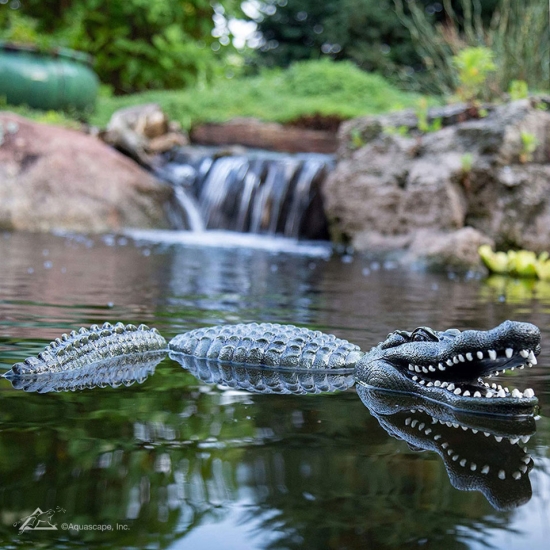

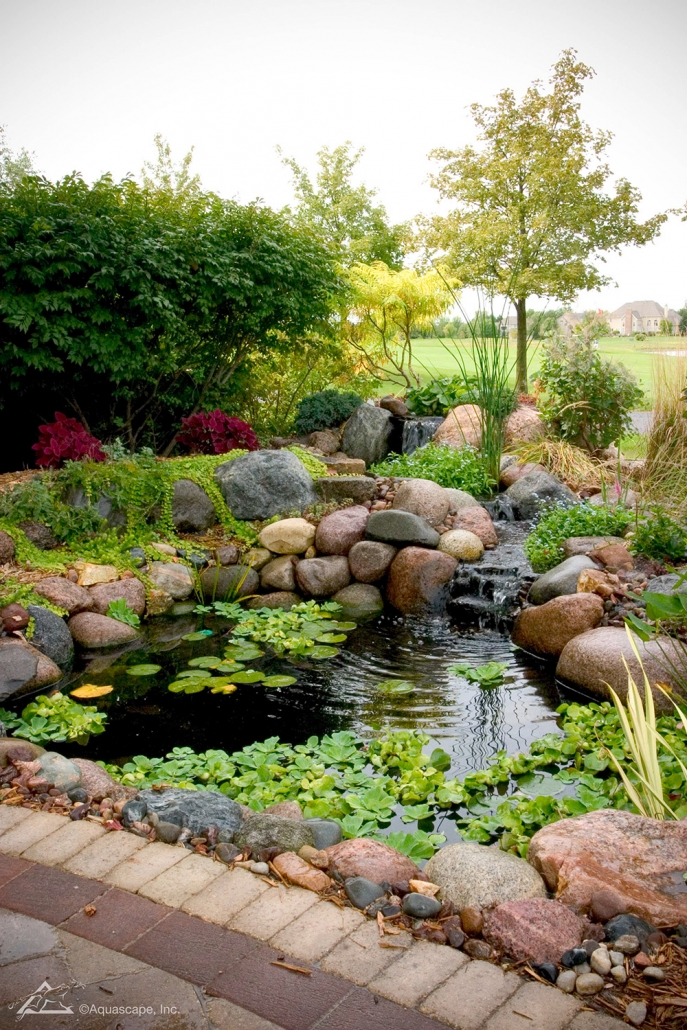
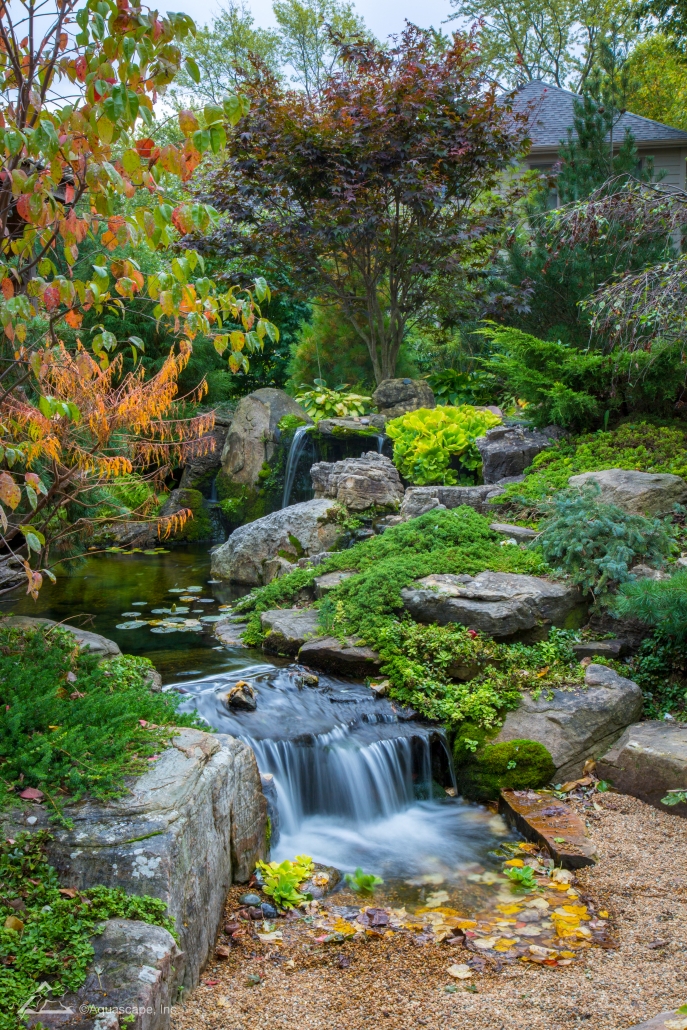
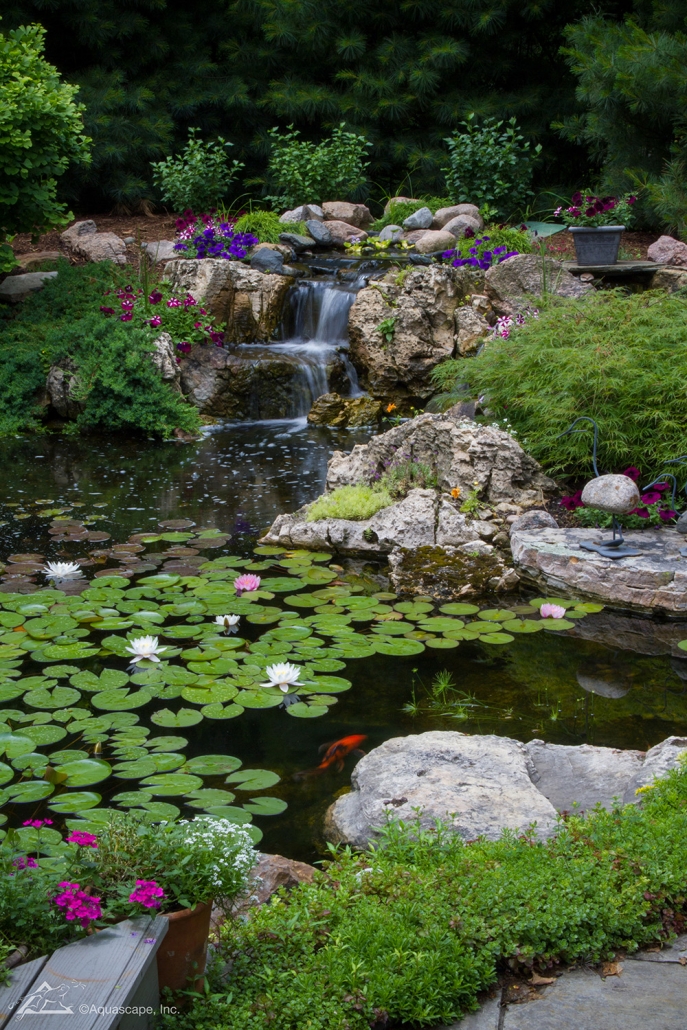
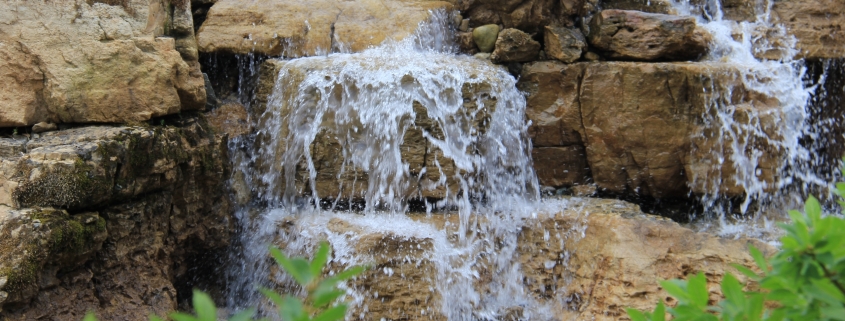 Meyer Aquascapes
Meyer Aquascapes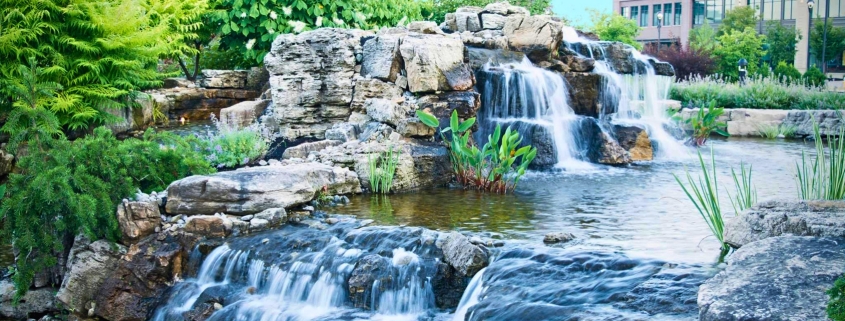
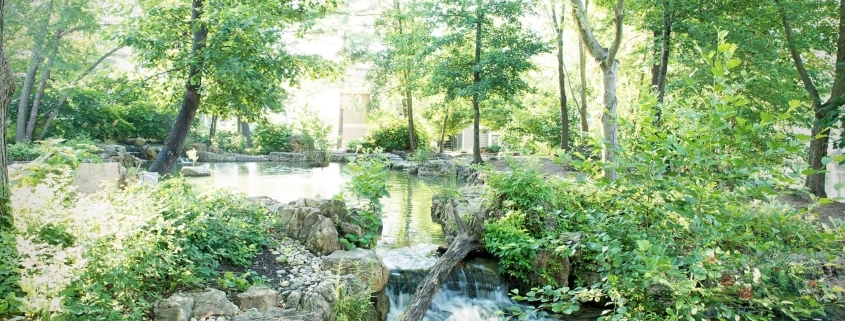 Meyer Aquascapes
Meyer Aquascapes
